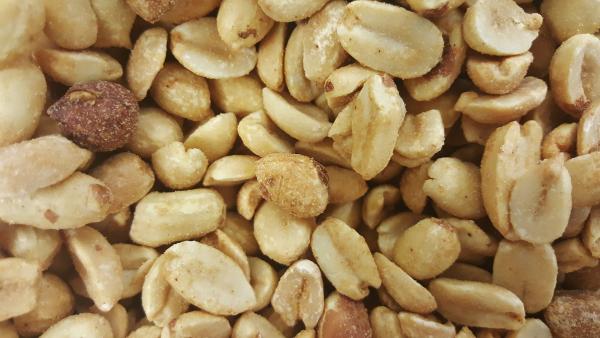Peanut allergy can be life-threatening
Peanuts are legumes, and it is different from tree nuts. A person allergic to peanuts may not be allergic to almonds, cashews, pistachios, walnuts, and pecans.
In peanut allergy, the body thinks that the peanut is a harmful substance and tries to protect the body from it. When the immune system attempts to build antibodies against peanut protein, reactions start. Allergy can affect the skin, eyes, nose, intestinal tract, lungs, and blood vessels. The symptoms are itchiness around the mouth and throat, digestive problems like diarrhea and vomiting, runny nose, short breath, and skin rash. Some reactions can be mild, but others may be moderate or even severe. A severe reaction is called anaphylaxis and is a medical emergency that should be treated immediately.
Because peanuts are ubiquitous in our world, and maybe because peanut butter is delicious, there has been a considerable effort to find ways to reduce allergic reactions. But even the people, who diligently avoid peanuts altogether, can accidentally come in contact.
- Direct contact by eating peanuts or peanut-containing foods. Sometimes skin contact can trigger allergy too. Peanuts can be found in cookies, cakes, candies, cereals, and pies. Peanut allergic people should be careful while eating out. Peanuts might be used in a sauce or in a dressing.
- Cross contact is when food gets exposed to peanuts during processing and handling. Eating a donut situated next to a peanut item from a shop can trigger a reaction. Products that contain the label “may contain peanuts” or “made in a factory that uses nut ingredients” should be avoided.
- Inhalation is inhaling air containing peanuts, for example, peanut flour or fumes from cooking with peanut oil. During grinding, peanut protein can be airborne, and inhalation of that can create allergic reactions.
Identifying those at risk
The National Institute for Allergy and Infectious Disease (NIAID) issued updated guidelines in 2017 to define risk groups of peanut allergy. Risk categories, appropriate use of testing, the timing, and approaches for introducing peanut-containing foods were defined.
To introduce peanut-containing food to infants, consider three groups
Group 1: Severe eczema, egg allergy, or both - Infants at high risk of developing peanut allergy because of severe eczema, egg allergy, or both. Peanut-containing food should be introduced from 4 to 6 months of age. Before starting peanut foods, all infants should have a peanut test searching for IgE antibodies.
Group 2: Mild to moderate eczema - Infants with mild or moderate eczema. Peanut-containing foods should be introduced into their diets at around six months of age, and no testing is required before introducing peanuts into their diet.
Group 3: No history of eczema or food allergy - Infants with no eczema or any food allergies can be introduced to peanut-containing foods in their diets without any testing beforehand.
According to research, up to 20% of children may eventually outgrow peanut allergy.
However, the best way to safely introduce peanut is not clear yet. A study conducted at Johns Hopkins showed that risks of peanut-induced allergy increase with the severity of eczema and increasing age between 4-11 months of age. Based on their finding, researchers offer two suggestions:
- Using the IgE antibody specific for a peanut component called ARAh2 rather than one directed at the whole peanut to more accurately diagnose a potential peanut allergy
- Introducing peanuts before age six months to infants with severe eczema to lessen the risk of allergy.
Treating the Allergy
Every situation is different, so let me begin by saying that you should seek your physician's advice. We are not dispensing medical advice today. Symptomatic relief for mild reactions makes use of antihistamines. More severe reactions require the immediate use of epinephrine, available as an “Epi-Pen” injection.
Peanut allergy is the only allergy whose treatment is approved by the FDA. The therapy tries to re-educate the immune system to not consider peanut as a threat using Palfozia, an oral medication made from peanut flour and applicable for children 4-17. It is not designed or indicated for emergency treatment.
Several studies, including one in the Lancet, found that if peanut-allergic people are given small amounts of peanut flour every day with increasing levels, over time up to 85% can safely eat 300 mg. Though it is not enough to allow eating peanuts, it can save people from accidental exposure. The downside is that there are some side effects, and if the medicine is stopped, the protection will no longer work.
Another potential option is a peanut patch, where a tiny amount of peanut protein is applied to the skin to increase the threshold for reactions. It is pending FDA approval.




